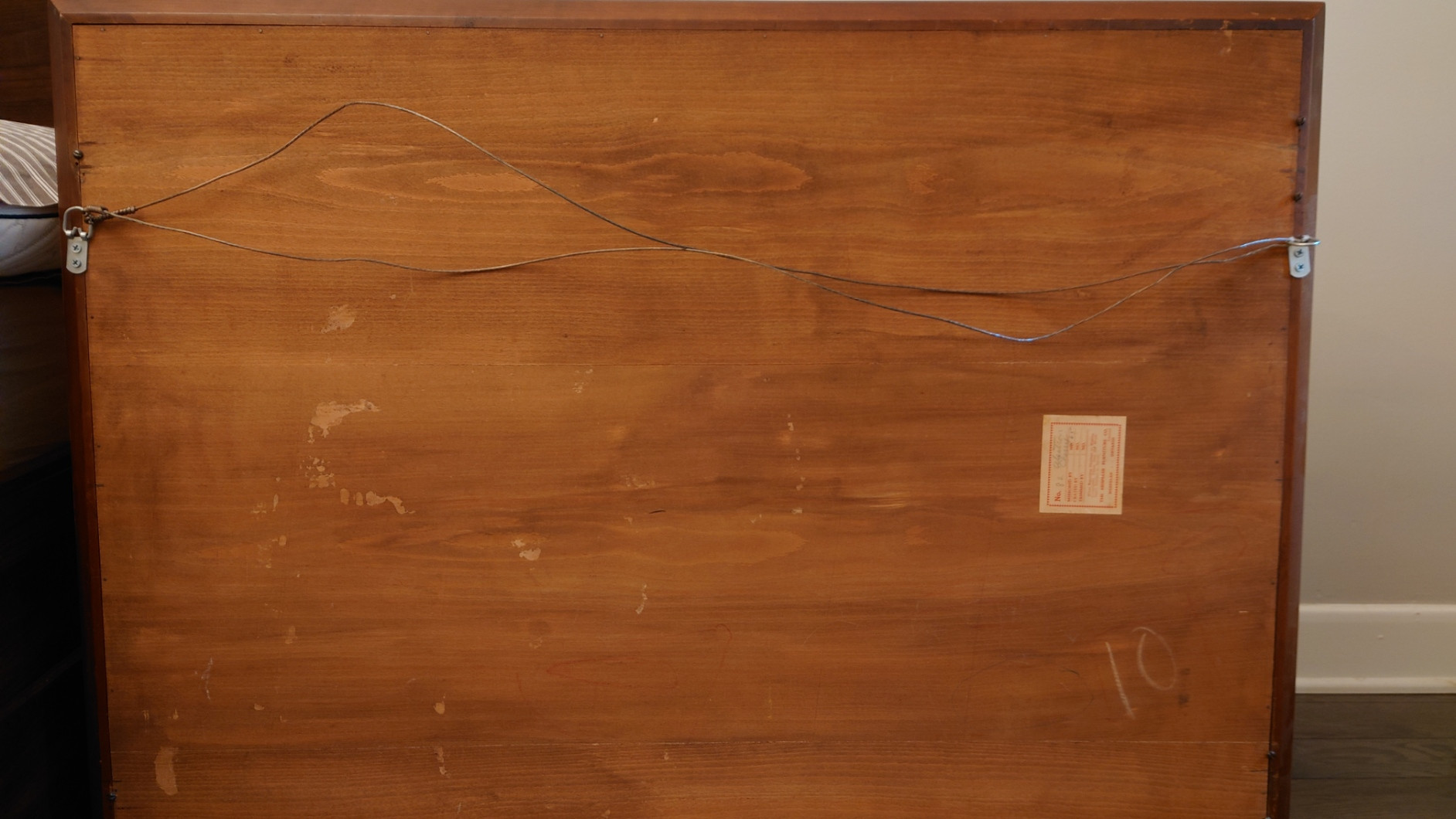I have been doing this for about 17 years on the back of a heavy mirror. But I decided to read up on how to do it properly and people seem appalled that I would have used a heavy duty cable to hang this mirror all this time. They claim straight onto d-hooks was the way to go. So I wanted to know what the consensus is here from people who have more direct experience than on regular forums? I prefer not to use french cleats if possible, I don't want to put more screws into the back of this very old mirror.
(the wall is concrete masonry, I'll be using 4" long concrete screws.)
And here's how I have the back of the mirror set up. The mirror is about 75-80 years old but the cabling was done by me 17 years ago.


